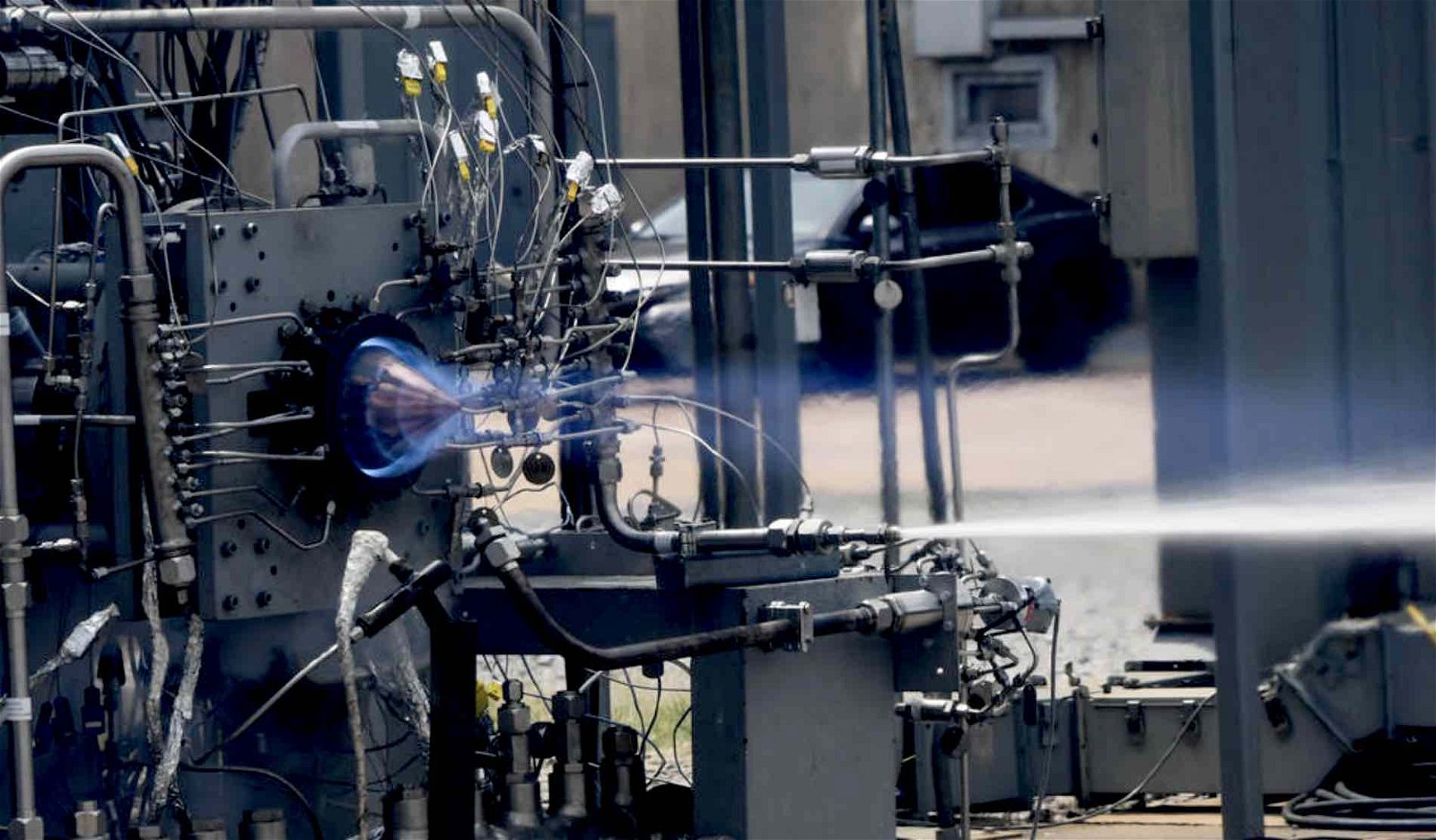NASA has announced the initial development and testing of its first full-scale rotating detonation rocket engine (RDRE) is complete, heralding technology that could aid in carrying humans to the moon in the near term, and may potentially also help facilitate deep space travel in the decades ahead.
The RDRE, a novel rocket engine design that could pave the way for new kinds of spacecraft propulsion, relies on detonation produced by supersonic combustion to create the thrust that moves it through space. The design is both more powerful and more efficient than current rocket engine spacecraft, making it ideal for crewed deep space missions to planets like Mars.
The development of the promising new system of propulsion was verified in recent days by engineering teams with NASA’s Marshall Space Flight Center in Huntsville, Alabama, with assistance from Indiana-based IN Space LLC, who collaborated with the space agency to develop the engine and conduct more than a dozen “hot fire” tests last year.
The collaboration has relied on 3D printing and other efficient production methods to develop and test hardware used in the construction of the RDRE, which is capable of extended periods of operation and maintaining optimum performance, despite extremely hot and highly pressurized environments produced by detonation rocket propulsion.
NASA says the RDRE is able to achieve this by using its proprietary copper-alloy GRCop-42 paired with a process involving powder bed fusion additive manufacturing, which allows its continued operation under such extreme conditions.
During its testing phase, which included a successful demonstration of the RDRE’s deep throttling and internal ignition, the rocket reportedly generated thrust exceeding the equivalent of 4,000 pounds for a duration of one minute while maintaining a record-breaking overall chamber pressure at 622 pounds per square inch, according to a NASA statement.
In recent days, it was announced that the space agency plans to apply the technology toward the construction of a 10,000-pound reusable rocket that will put its rotating detonation rocket engine design to work in future space missions.
The space agency’s announcement follows its recent revelation that, for the first time in fifty years, it plans to revive plans for the construction of a nuclear thermal rocket capable of reducing the long periods in transit between nearby planets like Mars that current chemical rocket propulsion would require.
The project, a collaboration between the Defense Advanced Research Projects Agency (DARPA) and NASA, revives past research by the space agency under NASA’s Nuclear Engine for Rocket Vehicle Application and Rover Projects.
Following last week’s update on the development and testing of the RDRE, NASA released a statement emphasizing that the recent success of its propulsion efforts will ultimately help to pave the way for the future of crewed space missions, thereby aiding in bringing a lasting human presence to the moon, and facilitating journeys to more distant locales like Mars.
“This successful demonstration brings the technology closer to being used with future flight vehicles,” the space agency said last week, “enabling NASA and commercial space to move more payload and mass to deep space destinations, an essential component to making space exploration more sustainable.”
Micah Hanks is Editor-in-Chief and Co-Founder of The Debrief. Follow his work at micahhanks.com and on Twitter: @MicahHanks.

